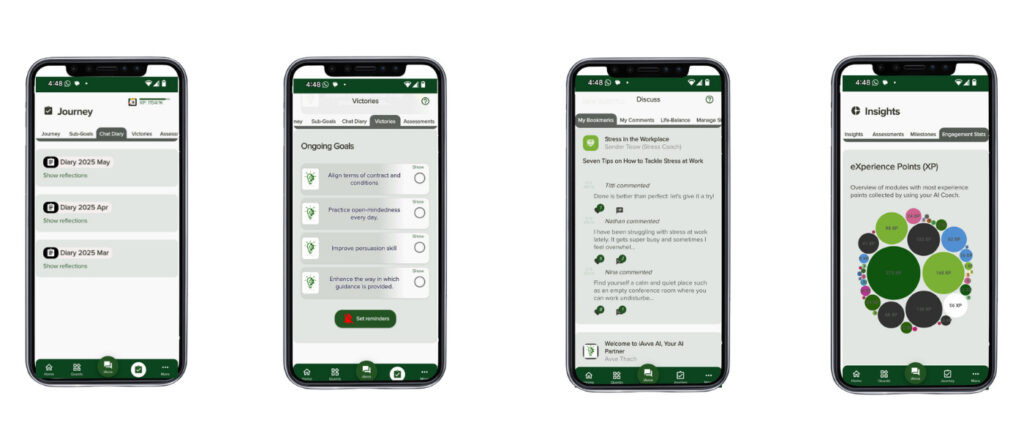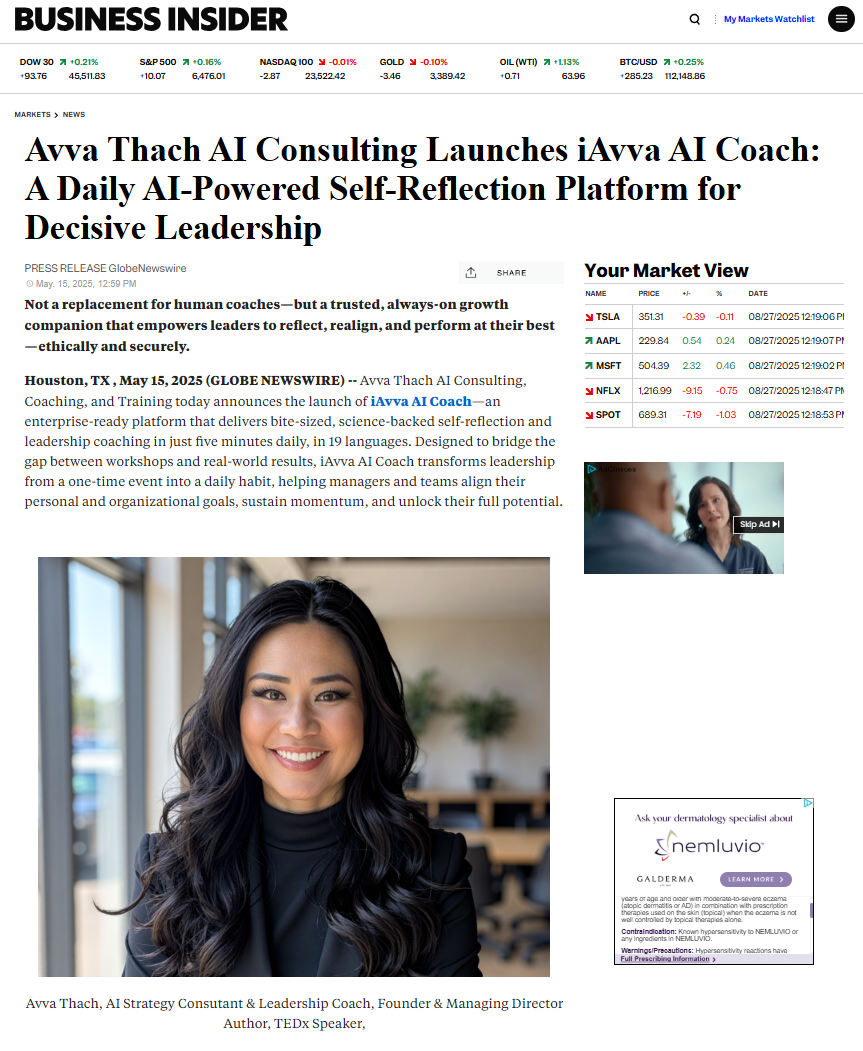Identifying the Barriers to Business Agility
Introduction
Welcome to the wild world of business agility, where speed and adaptability are the names of the game! In today’s fast-paced market, organizations must not only keep up with change but also thrive on it. Think of it as a dance: if one partner stumbles, the whole routine can fall apart. So, how do businesses avoid stepping on toes while maintaining their rhythm?
In this blog post, we’ll explore the barriers that hinder organizations from achieving true business agility. From cultural resistance to inadequate training, these obstacles can feel like a stubborn bouncer at the club keeping you from getting in and enjoying the party. But fear not! Understanding these barriers is the first step towards breaking them down.
According to McKinsey, a whopping 70% of organizations are either currently undergoing or planning to undergo an agile transformation. That’s right everyone wants in on this dance floor! But what exactly does it take to become an agile organization? And how can you navigate through those pesky barriers?
Throughout this post, we will unpack everything from agile business practices to the importance of leadership in fostering a culture of agility. So grab your metaphorical dancing shoes as we dive into identifying the barriers to business agility and learn how to overcome them!

Understanding Business Agility
So, what exactly is business agility? Imagine your organization as a sports car, sleek and built for speed. Business agility is that turbo boost that allows you to navigate the twists and turns of the market with finesse. It’s all about being nimble, adaptable, and ready to pivot at a moment’s notice.
In essence, business agility refers to an organization’s ability to respond swiftly to changes in the market environment while maintaining its core values and objectives. This isn’t just about adopting agile methodologies; it’s about creating an agile corporate culture that permeates every level of the organization.
The Core Components of Business Agility
- Organizational Agility: The overall capacity of the organization to adapt quickly across various functions.
- Agile Business Practices: Implementing frameworks like Scrum or Kanban that promote flexibility in workflows.
- Agile Leadership: Leaders who foster a culture of innovation and resilience, encouraging teams to experiment and learn from failures.
- Continuous Improvement: A commitment to regularly assess processes and outcomes for enhanced efficiency.
A key aspect of achieving this agility is understanding the need for a solid business agility framework. This framework acts as your roadmap, guiding your organization through the maze of agile transformation. Think of it as your GPS essential for navigating uncharted territories in today’s fast-paced business landscape.
The Benefits of Embracing Business Agility
- Enhanced Flexibility: Organizations can quickly adapt their strategies based on real-time data-driven decisions.
- Improved Speed to Market: Agile practices allow businesses to launch products faster than ever before.
- Nimble Business Strategies: Companies can pivot their approaches based on customer feedback or market trends without missing a beat.
- Cultural Resilience: An agile corporate culture fosters collaboration and innovation, making it easier for teams to work together towards common goals.
The journey toward becoming an agile organization isn’t without its challenges. However, by understanding what business agility truly means and implementing the right strategies, companies can unlock their potential for innovation and growth. Remember, agility isn’t just a buzzword it’s a vital component of modern business strategy!
The Importance of Agile Business Practices
In the fast-paced world of business, business agility is like a superhero cape it’s what allows organizations to soar above challenges and adapt to changes with grace. But what exactly are agile business practices? Let’s break it down!
Defining Agile Business Practices
Agile business practices refer to a set of principles and methodologies that prioritize flexibility, collaboration, and customer-centricity. Think of it as the secret sauce that helps businesses respond quickly to market demands and innovate continuously.
Benefits of Adopting Agility in Business Strategy
Adopting agility in your business strategy is not just a trend it’s a necessity for survival. Here’s why:
- Enhanced Flexibility: Agile practices allow organizations to pivot quickly in response to market shifts, ensuring they remain relevant.
- Improved Collaboration: By fostering cross-functional teams, agile methods enhance communication and collaboration across departments.
- Faster Decision-Making: With streamlined processes and real-time data-driven insights, businesses can make informed decisions swiftly.
- Customer-Centric Approaches: Agile organizations focus on delivering value to customers, leading to increased satisfaction and loyalty.
- Cultivating Innovation: A culture that embraces agile principles encourages experimentation and creative problem-solving.
Did you know? Companies with high levels of organizational agility are 1.5 times more likely to outperform their competitors in terms of revenue growth!
The Role of Agile Leadership
A critical component of successful agile transformation is effective leadership. Agile leaders foster an environment where teams feel empowered to take risks, iterate on ideas, and learn from failures. They embody resilience in business processes by encouraging continuous improvement through feedback loops.

The Connection Between Digital Transformation and Agility
The intersection of digital transformation and agility cannot be overlooked. As businesses integrate new technologies, those that embrace an agile business model are better positioned to leverage these tools effectively. This alignment not only enhances operational efficiency but also accelerates speed to market strategies for businesses.
In summary: Embracing agile business practices isn’t just about implementing new methodologies; it’s about nurturing a culture that values adaptability, innovation, and customer-centricity. As we delve deeper into the barriers hindering this agility in our next sections, remember: the journey towards becoming an agile organization starts with understanding its significance!
Common Barriers to Achieving Business Agility
In the quest for business agility, organizations often encounter a series of hurdles that can feel as daunting as a marathon with no finish line. Let’s break down these barriers and see how they trip up even the most well-intentioned agile transformations.
Cultural Resistance and Organizational Silos
First up, we have the ever-looming specter of cultural resistance. Imagine trying to change the course of a massive ship with just a paddle that’s what it feels like when you’re faced with entrenched mindsets. Teams often operate in silos, leading to a lack of cross-functional collaboration necessary for an agile organization structure. This silo mentality can stifle innovation and slow down decision-making processes, making it harder to adapt to customer needs.
Lack of Clear Direction and Vision
Next, let’s talk about vision or rather, the lack thereof. Without a clear direction, teams may find themselves wandering aimlessly like tourists without a map. A well-defined business agility framework is crucial for aligning goals with agile processes in businesses. When leadership fails to communicate a cohesive strategy, it leaves employees confused and unmotivated.
Inadequate Training and Skill Gaps
Now, onto training or the glaring absence of it! If your employees are expected to embrace new agile business practices, they need the right tools and skills. Inadequate training creates skill gaps that hinder effective implementation of agile methodologies. Investing in continuous improvement in business processes through targeted training is essential for fostering an agile corporate culture.
Poor Process Alignment and Integration
Lastly, we can’t ignore poor process alignment. When business operations are misaligned with agility principles, it’s like trying to fit a square peg into a round hole. An effective agile transformation requires seamless integration across various functions within an organization. If processes aren’t aligned, even the best strategies will falter under pressure.
Analyzing the Impact of Digital Transformation on Agility
In today’s fast-paced business environment, digital transformation isn’t just a buzzword it’s a necessity. Companies that embrace this shift often find themselves riding the wave of business agility, making them more responsive and adaptable to changes in the market.
So, how does digital transformation enhance agility? Let’s break it down:
- The Role of Technology: Leveraging advanced technologies such as AI, cloud computing, and data analytics empowers organizations to streamline operations. This tech-driven approach fosters an agile business model that can pivot quickly in response to customer needs.
- Real-Time Data-Driven Decisions: With access to real-time data, businesses can make informed decisions swiftly, enhancing their speed to market strategies. This capability is crucial for maintaining a competitive edge and ensuring that products or services align with evolving customer expectations.
- Responsive Supply Chain Management: Digital tools enable companies to optimize their supply chains, enhancing flexibility in operations. This means they can adjust production schedules or logistics on the fly an essential component of maintaining organizational agility.
- Cross-Functional Collaboration: Digital transformation fosters better collaboration between teams. When departments work together seamlessly using integrated platforms, it enhances overall efficiency and drives innovation a core tenet of an agile organization structure.
However, it’s not all smooth sailing. Digital transformation initiatives come with their own set of challenges:
- Cultural Resistance: Often, employees may resist changes brought about by new technologies due to fear of the unknown or lack of understanding. Overcoming this resistance is vital for successful agile transformation.
- Lack of Training: Without adequate training programs tailored to equip staff with necessary digital skills, organizations risk falling behind in their agile journey. Investing in employee development is key for fostering a culture of continuous improvement in business processes.
- Poor Integration: If digital tools are not well-integrated into existing workflows, they can create more confusion than clarity. Ensuring smooth integration is critical for realizing the full benefits of a digital strategy.
Key Takeaway: While digital transformation offers significant opportunities for enhancing business agility through technology adoption and improved processes, organizations must also be mindful of cultural shifts and training needs to ensure successful implementation.

The Role of Leadership in Fostering Agility
When it comes to business agility, leadership is the secret sauce that transforms a potentially bland dish into a gourmet meal. Agile leadership isn’t just about being quick on your feet; it’s about fostering a culture where adaptability and innovation thrive.
Agile Leadership Qualities and Practices
Agile leaders are like skilled conductors, orchestrating their teams to play harmoniously in the fast-paced symphony of the market. Here are some key qualities that define effective agile leaders:
- Visionary Thinking: Agile leaders have a clear vision that aligns with the organization’s goals, enabling them to steer their teams through uncertainty.
- Empathy: Understanding team dynamics and individual strengths fosters a supportive environment where everyone feels valued.
- Decisiveness: In the world of agile management, hesitation can be costly. Leaders must make informed decisions swiftly to capitalize on opportunities.
- Flexibility: Embracing change rather than resisting it allows leaders to pivot strategies as market demands evolve.
Empowering Teams for Agile Transformation
The best part? Agile leadership isn’t just about the top brass; it’s about empowering every team member to contribute to the agile transformation. Here are some strategies:
- Create Cross-Functional Teams: Encourage collaboration across departments to enhance agility in business operations. This breaks down silos and promotes diverse perspectives.
- Invest in Continuous Learning: Provide training opportunities that align with agile business practices, ensuring everyone is equipped with the latest skills and knowledge.
- Nurture a Culture of Innovation: Foster an environment where experimentation is encouraged, allowing teams to test new ideas without fear of failure.
- Implement Feedback Loops: Regularly solicit feedback from team members and customers alike. This real-time data-driven approach helps refine processes and strategies continuously.
Takeaway: Leadership plays a crucial role in fostering an agile organization structure that thrives on adaptability and innovation. By embodying agile principles themselves, leaders can inspire their teams to embrace change and drive business agility forward.
Strategies for Overcoming Barriers to Business Agility
Getting from point A (where your business is) to point B (where you want it to be) can feel like navigating a maze while blindfolded. But fear not! With the right strategies, you can cut through the complexity and embrace business agility. Here’s how:
-
Create a Culture of Continuous Improvement
Think of your organization as a garden. If you want it to flourish, you need to regularly pull out the weeds (inefficiencies) and nurture the plants (processes). Encourage teams to adopt a mindset of continuous improvement in business processes. This means regular feedback loops, retrospectives, and open discussions about what’s working and what isn’t.
-
Implement Lean and Agile Principles
Embrace the idea of doing more with less! By implementing lean and agile principles, your organization can streamline operations, reduce waste, and enhance productivity. This isn’t just about cutting corners; it’s about maximizing value for your customers while maintaining a flexible approach. Think of it as giving your business a fitness regimen!
-
Encourage Cross-Functional Collaboration
No one likes silos they’re like those annoying barriers in video games that prevent players from accessing new levels. Break them down! Foster a culture where teams from different functions collaborate seamlessly. This not only enhances communication but also leads to innovative solutions that drive agility in business strategy.
-
Utilize Real-Time Data-Driven Decisions
In today’s fast-paced world, relying on gut feelings is so last decade. Equip your teams with tools that enable real-time data-driven decisions. This agility focus allows businesses to pivot quickly based on market trends or customer feedback. It’s like having a GPS for your business journey no more guessing where to turn next!

By embracing these strategies, businesses can enhance their adaptability and resilience in an ever-changing landscape. Remember, agility isn’t just a buzzword; it’s the lifeblood of modern organizations aiming for sustainable growth.
If you’re ready to transform your organization into an agile powerhouse, consider seeking expert guidance or training tailored specifically for your needs!
The Future of Agile Organizations: Trends and Insights
As we peer into the crystal ball of business agility, it’s clear that the landscape is shifting faster than a cat meme goes viral. Organizations are evolving, and with them, the principles of agility are being redefined to keep pace with technological advancements and market demands.
1. Embracing Digital Transformation
The integration of technology into all areas of business is no longer optional; it’s essential. The future of agile organizations will heavily rely on digital transformation. Companies that leverage technology effectively will see enhanced business adaptability and improved customer experiences. Imagine a world where your supply chain management is so responsive that it can adjust in real-time to fluctuations in demand sounds like magic, right? Well, it’s just good use of data and AI.
2. Agile Leadership Takes Center Stage
Gone are the days when leadership was about making decisions from an ivory tower. Today’s leaders need to embody agile principles themselves. This means fostering an environment where teams can experiment, fail fast, and learn quickly. The concept of agile leadership is all about empowering your team to take ownership and drive innovation forward without waiting for approval from the top.
3. Customer-Centric Agility Approaches
The future will see a stronger emphasis on customer-centricity within agile frameworks. Businesses will need to align their strategies with customer needs more than ever before think of it as a dance where both partners must be in sync for success. This shift toward a more responsive model will require organizations to adopt nimble business strategies that prioritize real-time feedback from customers.
4. Cross-Functional Collaboration for Enhanced Agility
The walls between departments are coming down! Agile organizations are embracing cross-functional collaboration as a way to enhance innovation and speed up decision-making processes. By breaking down silos, teams can share insights more effectively, leading to improved outcomes across the board.
5. Continuous Improvement as a Core Principle
The mantra for future agile organizations will be “always be improving.” This means implementing an iterative process improvement model where feedback loops are not just welcomed but expected. By embedding this principle into their culture, businesses can stay ahead of the competition and adapt quickly to changing market conditions.
According to research by McKinsey, companies with high levels of organizational agility outperform their peers by 70% in terms of revenue growth.
As we look forward, it’s evident that agility will not just be about speed but also about resilience in business processes and strategic agility for sustainable growth. Organizations that embrace these trends now will set themselves up as leaders in their industries tomorrow.
Takeaway: To thrive in this new era, businesses must adopt an agile mindset across all levels from leadership down to individual contributors and align their operations with emerging customer needs through innovative technologies.
Conclusion: Embracing Agility as a Competitive Advantage
As we wrap up our exploration of business agility, it’s clear that embracing agility isn’t just a trend it’s a necessity for survival in today’s fast-paced market. Organizations that adopt agile business practices are not merely reacting to change; they are proactively crafting their futures.
Imagine your business as a nimble dancer, gracefully adapting to the rhythm of the market. This requires more than just quick steps; it demands a well-structured business agility framework that supports flexibility and fosters an agile corporate culture.
The Competitive Edge of Agility
Businesses that prioritize organizational agility can pivot quickly, harnessing emerging opportunities while mitigating risks. This dynamic capability is essential for:
- Speed to Market: Rapidly launching products or services can set you apart from competitors.
- Customer-Centric Approaches: By being responsive to customer feedback, businesses can tailor offerings that truly meet market needs.
- Efficient Decision-Making: Streamlined processes lead to faster decisions, allowing organizations to stay ahead of the curve.
Key Takeaway: Agility isn’t just about speed; it’s about creating an environment where innovation thrives and teams are empowered to make real-time decisions.
A Roadmap for Agile Transformation
The journey toward becoming an agile organization is paved with continuous improvement. Here are some actionable strategies:
- Cultivate Agile Leadership: Leaders must embody agility, promoting a culture where experimentation is encouraged.
- Invest in Training: Equip teams with the skills needed for agile methodologies and tools.
- Create Cross-Functional Teams: Encourage collaboration across departments to enhance responsiveness and innovation.
- Leverage Real-Time Data: Use analytics to inform decision-making processes and adapt strategies swiftly.
The Future Awaits
The landscape of business is evolving, and those who embrace agility will not only survive but thrive. As we look ahead, consider how your organization can integrate agility into its core operations. Whether through adopting new technologies or fostering an agile mindset among your teams, the time to act is now!
If you’re ready to take the leap into a more agile future, start by assessing your current practices against these principles. Remember, agility isn’t just a destination it’s a journey worth embarking on!










Leave a Reply